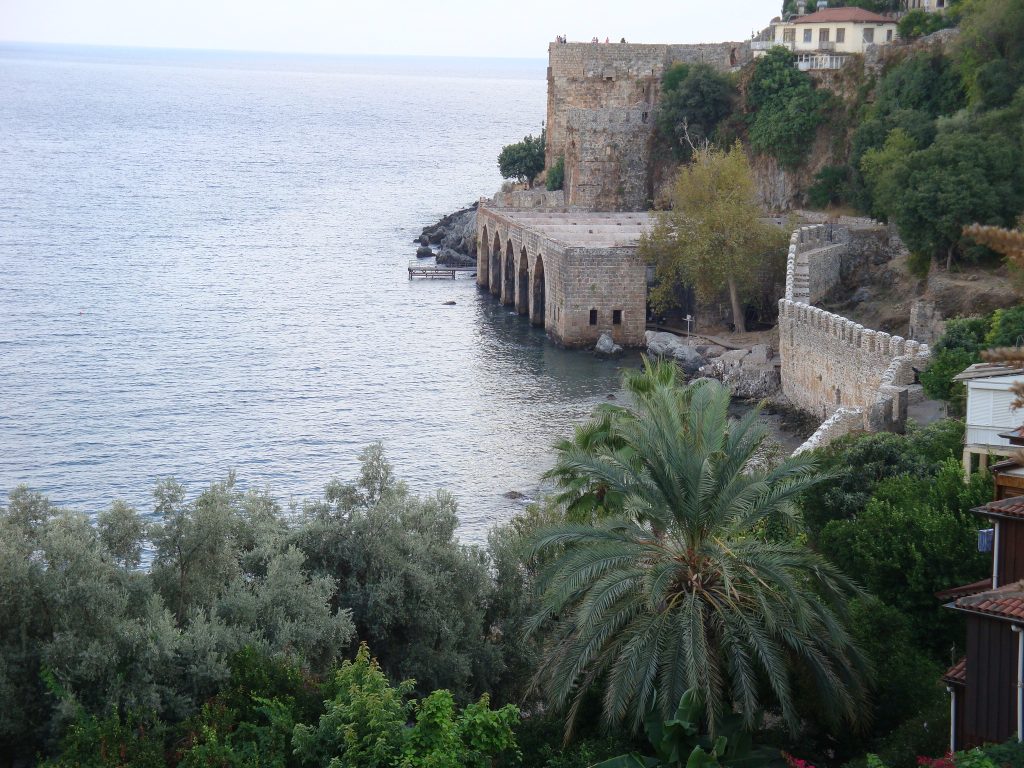Little Germany on Sea Population: 100,000
Festivals: International Jazz Days, mid-late September
Once just an overblown seaside resort, Alanya has been trying to re-identify itself and move more upmarket with considerable success. While it will never be able to escape the blight of shopping areas entirely given over to tourism it’s a lot better organised than it used to be, with neatly landscaped promenades, a scattering of sculptures, a small cactus garden and beach facilities given a pleasing wooden facing.
Like neighbouring Side, Alanya grew in a very short space of time from a small beachside holiday place into a sprawling mega-resort cut off from its main beach by a busy main road. This is real package-holiday territory with hundreds upon hundreds of hotels filled to the brim with visitors from all around the world (but particularly Germany, Russia and Scandinavia) every summer. Until recently it faded into a ghost town in winter but this is less the case now that there’s a large expat population here as well.
Alanya is still a great place to come if you’re into the full-on sun, sea, sand and sex holiday experience although it also cares very well for those in search of a family holiday with the Sea Park/Dolphin Park attraction 20km to the west a big draw (www.sealanya.com).
It’s less wonderful if you’re in search of an authentically Turkish atmosphere. Unexpectedly, though, the town does boast plentiful reminders of the Selçuks, who tend to be more readily associated with the heartlands of Anatolia. The town centre is dominated by a plug of rock topped off with a Selçuk castle. It’s by far the most attractive part of town, with magnificent views out to sea.
The Tophane area at the foot of the hill has also been spruced up, with some of its fine wood-and-stone Ottoman houses being turned into boutique hotels. A lot of work has also been done to make the Kızıl Kule-Tersane-Tophane stretch of ruins more cohesive and interesting.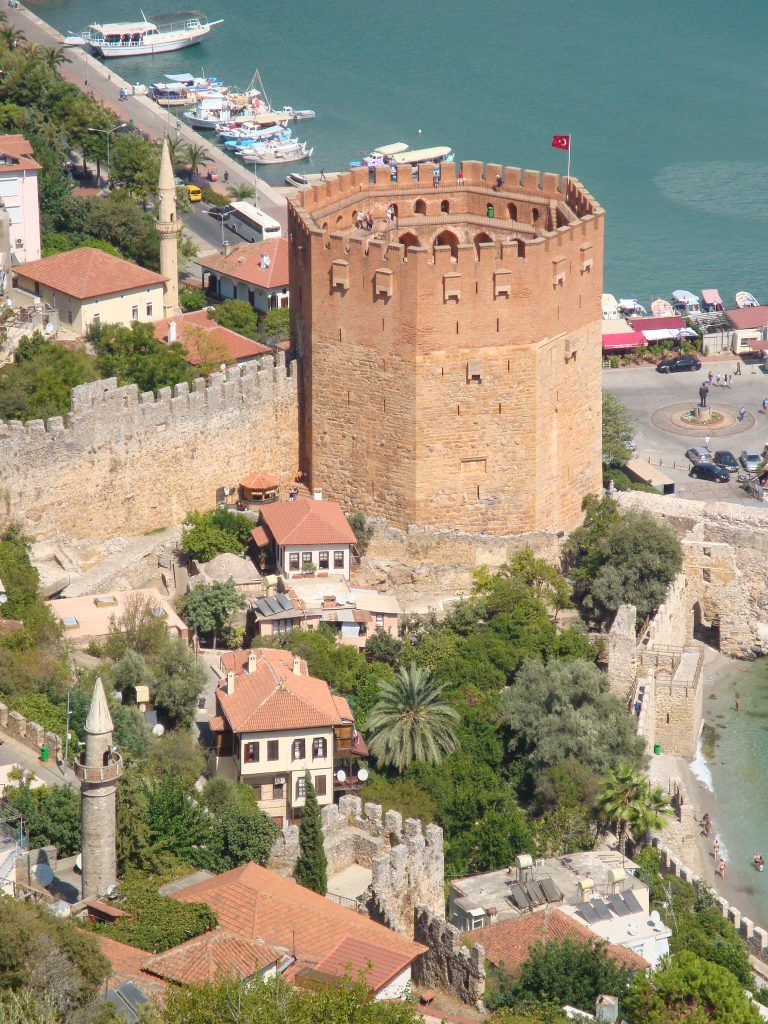
Around Town
To see the Selçuk castle it’s best either to take the cable-car or a taxi or to catch one of the twice-hourly buses that stop in front of the tourist office at the bottom of the hill. That way you can save your energy and then enjoy the 3.5km walk back down, pausing periodically to admire the views and to take refreshment in one of the many little cafes (the Sarnıç is especially inviting).
Whether you take a bus or taxi you will be dropped just in front of the walled İç Kale (Inner Castle), a largely empty space with the remains of several of the cisterns that supplied it with fresh water and of a domed Byzantine church inside it. The castle was a work of Alaadin Keykubad dating back to 1226 which went on to house the winter palace of the Selçuk leaders. In Selçuk times the slopes of the hill would have been the main settlement area.
Despite the fact that there’s little to see inside it admission to the castle is a rather hefty TL280. For most people it seems to serve as little more than a backdrop for selfies. Be warned that when cruise ships are in town it can also be overrun with tour groups.
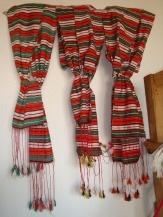 Walking downhill you will pass a string of inviting small cafes and tea gardens before arriving in the Ehmedek area where the graceful Süleymaniye Cami dating back to the 16th century forms a pleasing ensemble with the ruins of an old bedesten and several old stone-and-wood houses.
Walking downhill you will pass a string of inviting small cafes and tea gardens before arriving in the Ehmedek area where the graceful Süleymaniye Cami dating back to the 16th century forms a pleasing ensemble with the ruins of an old bedesten and several old stone-and-wood houses.
The Kültür Evi (Culture House) just behind the mosque is set up to show what life might have been like inside a local home – the huge wooden chimney hoods are especially impressive. Downstairs women weave striped silk cummerbunds in imitation of those once worn by local men. (Be careful – if you follow the footpath rather than the road downhill it will bring you out beneath the side road into Ehmedek and you might miss it).
The walk downhill takes you past several fine late Ottoman houses built into the rock, the remains of a domed chapel built against the walls, the remains of more cisterns (there are said to be 400 in all) and a gateway with a fine inscription over it.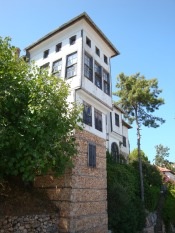
The road eventually brings you back to the bus stop near the museum. There is, however, a turn-off to the right which runs past the remains of a 19th-century church and then down to the Tophane neighbourhood (although it turns into a perilous path halfway down).
Like Ehdemek, the Tophane neighbourhood retains many old Ottoman houses with fine wooden terraces that are being given a new lease of life.
A boardwalk now links the Kızıl Kule (Red Tower) to the remains of the Tersane (Shipyard) and Tophane (Arsenal), all of them now open to visitors and well worth seeing. Beyond that you can keep walking to the Esat Burcu (Esat Bastion) above which a path meanders past the ruins of many unlabelled buildings including a church. You can also get up onto the wall here although there are no safety rails.
The Kızıl Kule (Red Tower) was built by Alaadin Keykubad at the same time as the castle, presumably to keep an eye out for enemies approaching from the sea. It now houses a child-oriented romp through Alanya’s history.
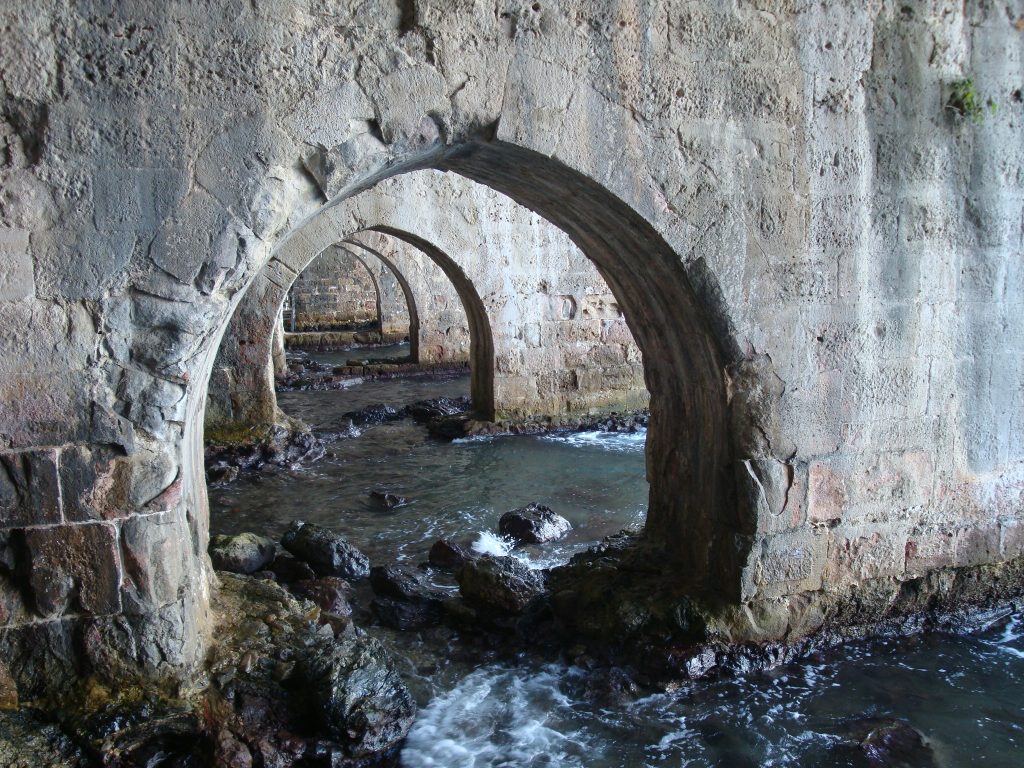 More interesting is the Tersane (shipyard), built in 1227, where the water comes right inside the arched recesses, each of them now kitted out with exhibits to do with the sea such as old anchors and a replica of a çekevele, a double-masted local boat that was shaped the same at stem and stern.
More interesting is the Tersane (shipyard), built in 1227, where the water comes right inside the arched recesses, each of them now kitted out with exhibits to do with the sea such as old anchors and a replica of a çekevele, a double-masted local boat that was shaped the same at stem and stern.
The Tophane is less interesting because emptier but still offers a great viewing platform for the sea.
Heading away from the Kızıl Kule you will come eventually to Alanya Museum (İsmet Hilmi Balcı Caddesi, closed Mondays), near the Atatürk Park, which houses a fairly typical collection of archaeological and ethnographic exhibits. The most interesting exhibit for many people will probably be the reconstruction of the interior of a local 19th-century house, a sobering reminder of the days before concrete.
Nearby the Damlataş Mağarası (Dripping Stone Cave) is an extremely humid space whose air is said to be good for asthma-sufferers. Although it has stalactite and stalagmite formations, the cave is very small and quickly gets crowded. You may want to save the admission fee towards the cost of visiting the more impressive Dim Mağarası at Kestel.
Shopping
Alanya is chock-a-block with shops catering for foreign visitors, most of them selling not especially inspiring clothes. You might, wih difficulty, track down a tailor still making Alanya şalvar, an item of elderly male apparel consisting of very baggy black pants with a neat maroon waistband. Easier to spot are the shops retailing painted gourds, seemingly an Alanya specialty.
Sleeping
There’s no shortage of hotels in Alanya. The trouble is that almost all of them cater for the European package-holiday market which means that they tend to be block-booked throughout the summer. Even if you can find an empty room chances are that that the walk-in price will much higher than the one paid by the package-holidaymakers whose tour company will have been able to negotiate a good deal in return for a guarantee of sales.
In 2012 two boutique hotels opened in the fast-gentrifying Tophane neighbourhood beyond the Kızıl Kule. The Villa Turka (Tel: 0530-547 4641, www.hotelvillaturka.com) and Centauera Hotel (Tel: 0242-510 0016) both look very inviting although the front rooms with the best sea views would probably be noisy. Villa Turka has the more restrained decor.
Kaptan Hotel. Tel: 0242-513 4900, www.kaptanhotels.com
Eating
Most of Alanya’s restaurants are aimed at a clientele that is unlikely to return and knows little about Turkish cuisine. That’s not to say you won’t eat reasonably, just that you will probably pay over the odds for nothing very special.
Cafe society is alive and kicking, with branches of Starbucks and Simit Sarayı as well as a few more individual offerings.
It goes without saying that Burger King and McDonald’s are popular attractions.
The romantic Ottoman House (Tel: 0242-511 1421) restaurant has been in business a long time now and its attractive garden is almost as much of a plus as the Ottoman house from which it took its name. The menu features a fine choice of Turkish dishes with the odd quirky twist. The fish banquets on Thursdays and Sundays are reputedly excellent.
The success of that venture has resulted in a couple of other nearby Ottoman houses being turned into restaurants. The late 19th-century Ağaoğlu Evi that once housed the Kaymakam’s office is now the trendy-looking Lokanta Su with a bar shaped like a boat. Across the road the Anatolia Garden Restaurant is more conventional.
Transport info
The nearest airports are in Antalya and Gazipaşa.
There are frequent buses along the coast road from Antalya to Alanya, passing through Manavgat (for Side). Buses to the Adana area also fairly frequent.
Day trip destinations
